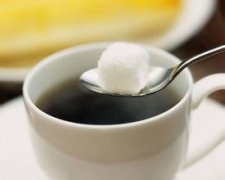Why is the espresso coffee machine pre-soaked? What is pre-immersion?

What is pre-immersion? To put it simply, before extracting the coffee, let a small amount of hot water wet the pressed powder, releasing carbon dioxide, making the whole pressed powder tighter, and then accept the extraction of 9 pressures of hot water.
Prepreg has existed since the birth of espresso, and it is not a new thing invented in modern times. For the earliest pull-rod machines, the prepreg function was natural. When making coffee, pull down the pull rod (lever), lift the piston, the hot water enters the cavity and the filter bowl, and the hot water touches the coffee cake and begins to presoak, and the pull rod is not released until the desired pre-soaking time is completed. The piston begins to press down under the action of the spring to realize the extraction of coffee.
By the way, the pull rod machine does not need to relieve pressure, because when the piston reaches the bottom of the cavity, the pressure of the spring is already very small.
E61
When the motor drives the pump instead of the spring and piston, the barista can save a little time and energy. In order to achieve pre-leaching in a new way, people invented the E61's cooking head (of course, in addition to pre-leaching, E61 also has the function of using the thermosyphon effect to heat the head). The E61 head has a hollow system with pistons and springs. This mechanical system makes the pressure of hot water in the filter bowl build up slowly, thus achieving the effect of pre-soaking.
The E61 system does not have an electromagnetic pressure relief valve, and the pressure in the filter bowl is manually released by moving a small handle.
Electronic control version
In the 1960s, when automatic control technology was still expensive, E61 boiling head was an ingenious solution. Today, with the popularity of microelectronic technology, the realization of prepreg is a very simple thing, and the cost is much lower than that of E61. In the electronically controlled version of the machine, the prepreg generally works in two ways:
A) after pressing the production key, the pump starts to operate until the coffee is made, and the pressure relief cutting is first turned on (at this time, the pressure to enter the hot water in the filter bowl cannot be established), then turn off after the pre-soaking is completed, and then turn on the pressure relief until the coffee is made.
B) after pressing the production key, the pressure relief cutting is turned off until the coffee is made, and the water pump is operated briefly (when the hot water entering the filter bowl is less and the pressure is low), then pause until the prepreg is completed, and then start running again until the coffee is finished.
Manual version
What about the pre-immersion of the hand-controlled version? Experts do not advocate the manual way of "on-off-pause-on". In fact, the pressure of the pump is not established instantly, coupled with the fact that the water pipe entering the boiling head is very thin (or has a very thin section) and has a flow-limiting effect, so the water pressure in the filter bowl is also established step by step, and there is no need for artificial prepreg.
In fact, no matter which way of pre-soaking, the hot water is only in contact with the thinnest layer of coffee powder on the surface of the coffee cake in the filter bowl, not the whole coffee cake.
Important Notice :
前街咖啡 FrontStreet Coffee has moved to new addredd:
FrontStreet Coffee Address: 315,Donghua East Road,GuangZhou
Tel:020 38364473
- Prev

Top Ten Truths about Coffee what are the health benefits of coffee?
According to the Russian newspaper Truth, new research confirms that coffee is good for health, can prevent cancer and delay aging, but drinking too much can also be harmful to health, so it is important to grasp the degree. Here are 10 facts about coffee, and knowing them is good for you and your correct understanding of coffee. Fact 1: coffee is good for health. Doctors say coffee is good for the body.
- Next

What do you need to prepare for the cup test of SCAA?
According to the SCAA standard, the cup test baked beans should be medium baked (see SCAA Baking Swatch 55), the cup test sample baking time should be between 8-12 minutes, can not be scorched, or there is a focus. Cool quickly after baking and keep airtight in a cool place. Place for at least 8 hours after baking, but cup testing must be carried out within 24 hours after baking. In other words, bake the beans at 12:00 and test the cup.
Related
- Detailed explanation of Jadeite planting Land in Panamanian Jadeite Manor introduction to the grading system of Jadeite competitive bidding, Red bid, Green bid and Rose Summer
- Story of Coffee planting in Brenka region of Costa Rica Stonehenge Manor anaerobic heavy honey treatment of flavor mouth
- What's on the barrel of Blue Mountain Coffee beans?
- Can American coffee also pull flowers? How to use hot American style to pull out a good-looking pattern?
- Can you make a cold extract with coffee beans? What is the right proportion for cold-extracted coffee formula?
- Indonesian PWN Gold Mandrine Coffee Origin Features Flavor How to Chong? Mandolin coffee is American.
- A brief introduction to the flavor characteristics of Brazilian yellow bourbon coffee beans
- What is the effect of different water quality on the flavor of cold-extracted coffee? What kind of water is best for brewing coffee?
- Why do you think of Rose Summer whenever you mention Panamanian coffee?
- Introduction to the characteristics of authentic blue mountain coffee bean producing areas? What is the CIB Coffee Authority in Jamaica?

